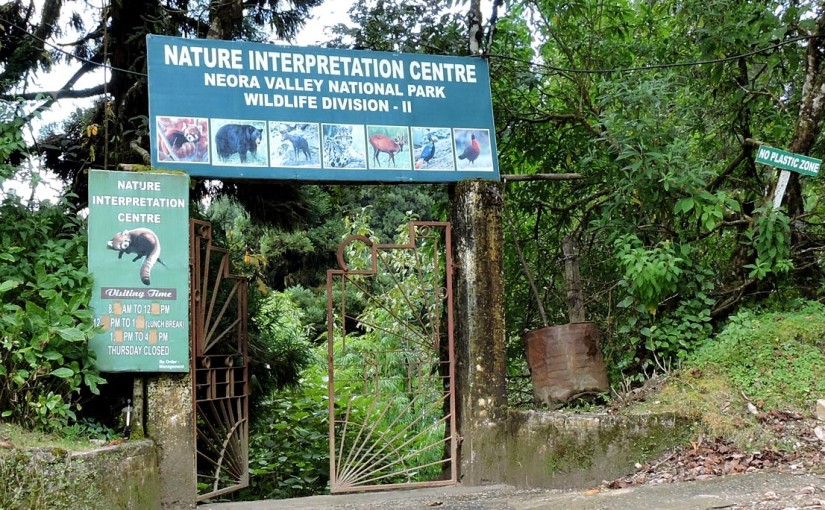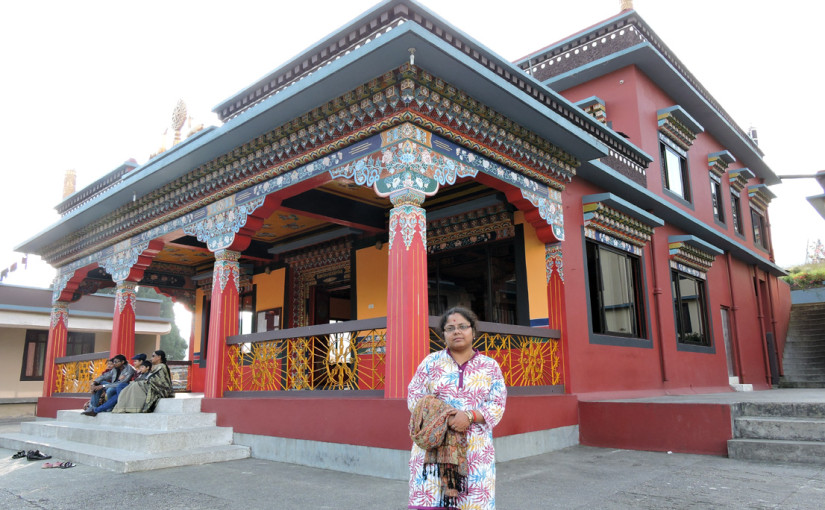Kolakham, a beautiful land in the clouds facing the mighty Mt. Kanchenjunga is home to 62 Nepali families from the Rai community. Bird watchers and adventurous souls regard Kolakham as paradise on earth because the land is replete with natural abundance. Perched at an altitude of 6200 feet, the hamlet lies on the fringes of the famous Neora Valley National Park in the Kalimpong subdivision of Darjeeling district. The mountainous village of Lava is located just 8 kilometers from Kolakham. Mt. Kanchenjunga can be viewed from here in its full glory along with other peaks of Eastern Himalaya which include Pandim, Kabru, Siniolchu. Kolakham is 108 kilometers from Siliguri, the gateway to North Bengal. Continue reading
Tag: Neora Valley National Park
Samsing is on the border of Jalpaiguri and Darjeeling an elevation of 3,000 feet
Samsing is a small hamlet located on the border of Jalpaiguri and Darjeeling in the foothills. Enjoying an elevation of 3,000 feet, Samsing is beautiful in its natural glory. The vast landscape, forests, hills, tea gardens add to the charm of this hamlet which is increasingly becoming a popular tourist destination. The village is divided into two sections- the tea garden area and the basti that is the settlement zone which is inhabited by around 2500 people. Samsing is 8 kilometers from Meteli, 15 kilometers from Chalsa, 19 kilometers from Malbazar, 50 kilometers from Mongpong, 80 kilometers from Siliguri and 26 kilometers from Gorumara. The land experiences mild weather throughout the year which is another reason for its popularity as a tourist destination.
How to reach Samsing
Reaching Samsing is easy because it’s accessible by road. It’s a 3 hour drive from Siliguri and the route is most rewarding. It has visually stunning and picturesque landscape which seems like the backdrop of a romantic film. On the National Highway-31 you have to cross Malbazar to reach Chalsa from where its 15 minutes drive to Meteli by taking the left turn. These 8 kilometers is the most rewarding because the road is flanked by sprawling tea gardens- the Samsing and Zurantee tea gardens making the route enchanting. However, the road leading to Samsing is quite narrow so one must drive carefully.
Accommodation facilities in Samsing
Samsing provides plenty of accommodation facilities to the tourists. Suntalekhola is the ideal place to stay and most of the tourists put up at the cottages here. Suntalekhola is about 4 kilometers uphill from Samsing and has well facilitated cottages and bungalows maintained by West Bengal Forest Department. Cross a small hanging bridge to arrive at the government resort at Suntalekhola. Alternatively, you can stay at the Rocky Island Nature Resort which is located on the banks of Murti River. You will be provided tents for overnight stay to enjoy the beautiful and mysterious atmosphere of the region. If you wish to see the lifestyle of the local people, then Faribasti homestay will be the best option for you. Experience their hospitality and also their love for nature.
Attractions in Samsing
Staying at any of these places will be a treat for your eyes because of the pristine nature and of course the meandering Murti River. The river turbulently flows from Neora Valley National Park through Samsing to reach Jaldhaka near Gorumara National Park. You can also hear the sound of the water splashing against the rocks. At Suntalekhola you will notice a beautiful orange stream flowing through the land and making it picturesque. Suntalekhola and Rocky Island also serve as picnic spots for local people along with Laliguras which is again a beautiful place with lush greenery amidst mountains.
For adventure take the trek routes originating from Suntalekhola leading to Neora Valley national Park. But you must seek permission from the forest department to enter the park. Other trekking routes lead to Tree Fern Point and Mo or Mo Chaki from where the Himalayan Mountains are visible on one side. The snow covered Jalep La pass is also visible from here.
Rachela Pass is the highest point of Neora Valley National park on 10,500 feet
Rachela Pass is the trade route between India (Sikkim) and Bhutan located at an elevation of 3152 meters. This scenic beauty of a pass is an oft visited tourist attraction and experiences footfall round the year. Especially tourists loving adventure visit this pass and feel like they have achieved something. Part of the Chola Range bordering Sikkim and Bhutan the ridge is 4700 meters also happens to be the source of other passes like the Jelep La and Nathu La; both these are extremely popular and of course in use passes. Rachela Pass lies in the southern end of the ridge. Continue reading
Neora Valley National Park
Established in 1986 Neora Valley National Park is located near Lava in Kalimpong subdivision of Darjeeling District. Covering an area of 89 square kilometers this park is of the richest biosphere reserve in India. Open from 8 am to 12 noon, 1pm – 4pm. It is closed on Thursdays. It is one of the most popular tourist destinations and is growing rapidly in importance due to the number of tourists and also due to the diverse flora and fauna of North Eastern Himalayas. Located at a distance of 32 kilometers from both Lava and Samsing which is the border area, Neora Valley National Park has been declared by UNESCO as a World Heritage Site. Entry fee to this awesome reserve is INR 20. Continue reading
Lava is located 34 kilometers east of Kalimpong
Lava is a small beautiful hamlet in Darjeeling district located 34 kilometers east of Kalimpong. One of the popular destinations Lava means the land with the presence of God. True to the meaning of its name, Lava is paradise on earth. With an elevation of 7,016feet, it is one of those few places in West Bengal to experience snowfall which is one of the major attractions to his charming village. The heavy forests covering the land mostly consist of wet alpine trees of birch, pine and fir and the forest here is a deciduous one. However, during the rainy season the forest is infested with leeches for which tourists are advised to carry salt, stick and occasionally knives with them. Continue reading

